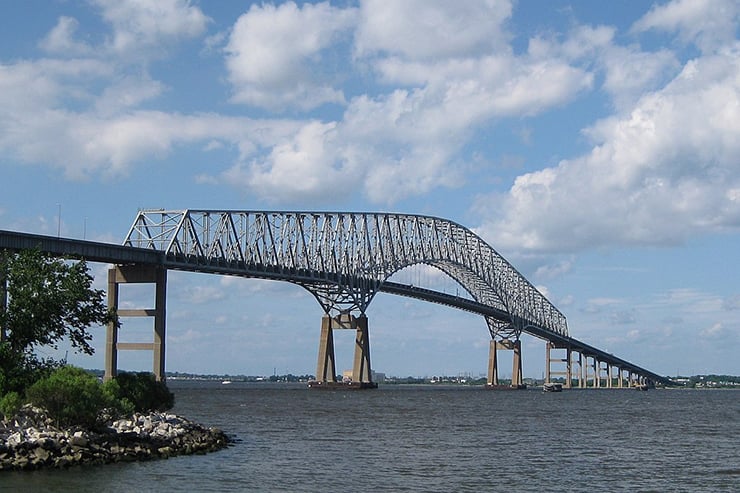Dawn over the Patapsco River revealed the wreckage of Baltimore’s Francis Scott Key Bridge, jutting from the water like a colossal broken spine. At around 1:30 a.m. on Tuesday, a 984-foot-long cargo ship called the Dali had slammed into a pillar and brought the crossing down.
It is unclear what caused the collision. Power aboard the vessel appears to have flickered on and off moments before impact. Social media swiftly swirled with theories as to the “real” reason behind the incident. But the truth doesn’t need larding with conspiracies to be awful all by itself.
The collapse of the Key Bridge is just the latest example of America’s long slide down the slope of national decline.
In January 2022, Pittsburgh’s Fern Hollow Bridge collapsed and fell more than 100 feet into a ravine, sending several vehicles, including a transit bus, plummeting. The bridge wasn’t hit by a container ship; it simply crumbled.
In the aftermath, an investigation by the National Transportation Board “identified systemic failure by bridge inspection companies, the city and state as the cause of the collapse,” Newsweek reported. According to Mayor Ed Gainey, 66 percent of Pittsburgh’s bridges need “critical attention” or have “high-priority issues.”
There’s a good chance these are also problems at infrastructure near you. The transportation board warned thousands of bridges across America are in danger of collapsing due to neglect.
But it’s not just the bridges you have to worry about.
A Boeing airplane bound for Atlanta made an emergency landing after an engine caught fire. That followed another Boeing-made aircraft losing a door panel midflight. Meanwhile, in Boston, a train derailed on Saturday. That incident came just 24 hours after another incident on the Massachusetts Bay Transportation Authority system, where a train lost power, forcing passengers to evacuate.
The incident at Key Bridge is nothing out of the ordinary in this light, to the extent that signs of imperial decline have become common all around us. But the fact it takes its name from the author of our national anthem is poetic.
The lawyer and poet Francis Scott Key was a witness to history in 1814 when the British war machine worked to crush the nascent American nation. Washington lay in ruin. The Capitol and the president’s house smoldered.
On Sept. 13 of that year, Key accompanied a U.S. official to the mouth of the Patapsco River. They were on a mission to secure the release of American prisoners. It was successful, but their British hosts turned them into a captive audience. Key and his compatriots were to be detained until after the Battle of Baltimore, for operational security reasons.
Key and his compatriots watched as the British bombed Fort McHenry through the night. They had a front-row seat to what seemed like it could be an American defeat.
“The dawn’s early light” relieved Key of his fears, revealing “that our flag was still there.” Inspired by the sight, Key put pen to paper on an envelope, pouring out his heart for a nation in the spring of its life.
What does it say, then, that a bridge named after Key fell because the people who govern this country neglect its infrastructure? At a minimum, it says that it’s governed by people who don’t love it. Not like Key did.

Leave a Reply